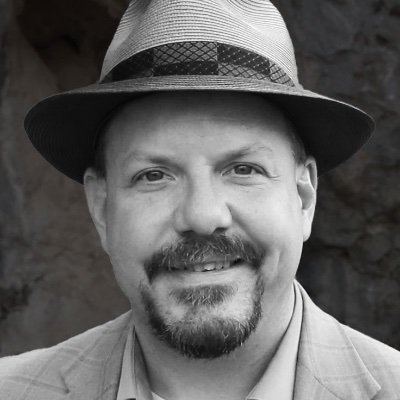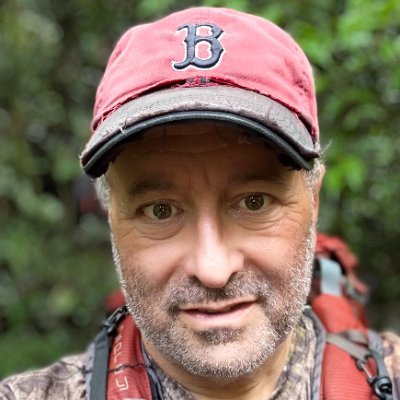
John Hawks
@johnhawks
Followers
28K
Following
5K
Media
3K
Statuses
26K
I'm a paleoanthropologist. I explore human fossils and genomes to understand where we came from and what we share with our ancestors.
Wisconsin
Joined July 2009
Today nearly 1.9 billion people live in India, Pakistan, and Bangladesh, numbering close to a fourth of global humanity. New genetic data shows details about ancient mixture from Neanderthals and Denisovans, and the first peopling of the region. https://t.co/mO7ymwliqv
johnhawks.net
People carrying Neanderthal mixture entered the subcontinent after 50,000 years ago, meeting Denisovans
2
10
48
A new post covering some recent work on estrogen, progesterone, testosterone and pregnancy from ancient skeletons. Another fascinating area where the lives of ancient people may be encoded in their bones and teeth. https://t.co/8Cx4qysghF
johnhawks.net
The widening horizon of molecular biomarkers from ancient bones and sediments may open new doors to the biology of ancient people.
4
17
74
It's almost as if the secret key to progress in paleontology is understanding that hiding fossils is always counterproductive and wastes everyone's time.
0
8
40
Love this story about the new analysis of an important Nanotyrannus fossil and resulting conclusions. Why am I never surprised when a long debate in paleontology is ultimately settled by just letting researchers study a fossil that has been hidden? https://t.co/qjmwwtwyfg
arstechnica.com
“This fossil doesn’t just settle the debate. It flips decades of T. rex research on its head.”…
2
4
36
Academic Geography narrowcasting for a moment here: Geography, almost always a trend laggard in academia, didn't really adopt modern peer review norms until the 1970s-80s. These norms were introduced via the discipline's so-called "Quantitative Revolution" and then adopted in
Peer review as we think of it today only really dates back to the 1960s and has no track record whatsoever of facilitating any Kuhnian paradigm shifts. I suspect it can't actually facilitate this, and can only enforce norms protecting the old paradigm.
4
9
85
Peer review as we think of it today only really dates back to the 1960s and has no track record whatsoever of facilitating any Kuhnian paradigm shifts. I suspect it can't actually facilitate this, and can only enforce norms protecting the old paradigm.
Everyone is focusing on the "fascism" angle but on more thought i think it's actually "under peer review" that is more telling. It's meant to convey "the acid test of Truth" but it's ultimately a social process that can enforce consensus, even if that consensus is mistaken.
7
51
345
“This group mixed with early Neandertals and was then replaced by Denisovans who had mixed with later Neandertals.” Mixing all the way down.
biorxiv.org
Denisovans, an extinct sister group of Neandertals who lived in Eastern Eurasia during the Middle and Late Pleistocene, are known only from a handful of skeletal remains and limited genetic data,...
10
21
173
Paleoanthropology can be confusing with names. Why would scientists use “Denisovan” instead of coming up with a species name? Or “modern human” instead of Homo sapiens? And why didn’t some names ever catch on, like the Heidelbergers or the chumanzees? https://t.co/q5SrmqWLNk
johnhawks.net
In a new research article, I review the ways that paleoanthropologists name ancient groups outside the Linnaean system.
3
14
56
Recipe email from @nytcooking this morning led with a “beans, greens, and grain” dish, which honestly looks very much like the food mixture preserved in charcoal from Shanidar Neanderthals, some 70,000 years old. Classic dishes indeed! https://t.co/lrfW9wnbGx
johnhawks.net
Looking at a fascinating new study that finds mixtures of different plants within ancient morsels of charred foods.
3
3
29
Post describing these new research results from Elise Kerdoncuff and coworkers. With so much Neanderthal ancestry uniquely present in South Asia, it's likely that the place where populations mixed was nearby. https://t.co/mO7ymwlQg3
johnhawks.net
People carrying Neanderthal mixture entered the subcontinent after 50,000 years ago, meeting Denisovans
1
8
48
More than 11% of the Neanderthal genomic segments found in a large sample from India have never before been seen in any other population. It's the best living repository of Neanderthal ancestry on the planet.
12
54
295
The genetics of South Asia are coming into focus, helping reveal how fast the avalanche of modern humans got going. This region has more Neanderthal genetic variation than any other, and a unique component of Denisovan ancestry never seen before. https://t.co/mO7ymwlQg3
johnhawks.net
People carrying Neanderthal mixture entered the subcontinent after 50,000 years ago, meeting Denisovans
1
17
40
Bringing the Harbin skull into the Denisovan fold has activated some interesting morphological comparisions. But most are forgetting a big bias: None of the tooth, jaw, or skull fossils tied so far to the Denisovans with biomolecular data are female. https://t.co/LOe0S3jYyH
johnhawks.net
Protein data shows that most known Denisovan teeth come from male individuals, hamstringing attempts to understand the variation of this group.
3
8
43
HHMI should emphasize to its scientists that the costs of journal publishing go far beyond dollars, and that HHMI scientists would be better served spending their time and money on new research rather than cleaving to the demands of editors and reviewers, and on participating in
2
2
6
Could there be a connection between a squashed million-year-old skull and the Denisovans? I look at whether a provocative new study can be squared with what we already know from ancient genomes. I think there's a way. https://t.co/CBbAmj78Ml
johnhawks.net
The relationships of fossils from deep time in China may help reveal ancestral connections for the Denisovans
7
22
82
The fossil site of Malapa, South Africa, is most well known for its hominin skeletons, two million years old, but it has many other exceptionally preserved mammals also. This is part of a beautiful partially articulated mongoose skeleton.
0
3
19
I’m a former creationist. Here’s why telling people to ‘follow the science’ won’t work. This is my first American opinion piece - I can’t tell you how it feels to say my piece on this in my own words. Here’s a free link (also watch HUMAN on PBS):
This is my 1st American op-ed; my backstory and evolutionary biology’s understanding of tribalism can help explain why simply telling people to ‘believe the science’ won’t work. I’m an evolutionary biologist. I’m also a former creationist.
4
3
23
“I’ve seen termites interacting with fossil layers that ancient termites built, two million years old. They are recycling and reusing the old layers still. They don’t know it, but they are reconstructing a niche that was first built in deep history.”
johnhawks.net
I propose a “Culture First” way of looking at ancient remains, instead of the “Culture Last” assumption so pervasive in the field.
2
5
27
let’s spotlight the new kid on the block…UW105. The “newest” hominin fossil bearing site, is one to keep an eye on, not just for its abundance of fossils,but the research and technical team on the ground making discoveries everyday. #HeritageDay #SouthAfrica
0
4
14















